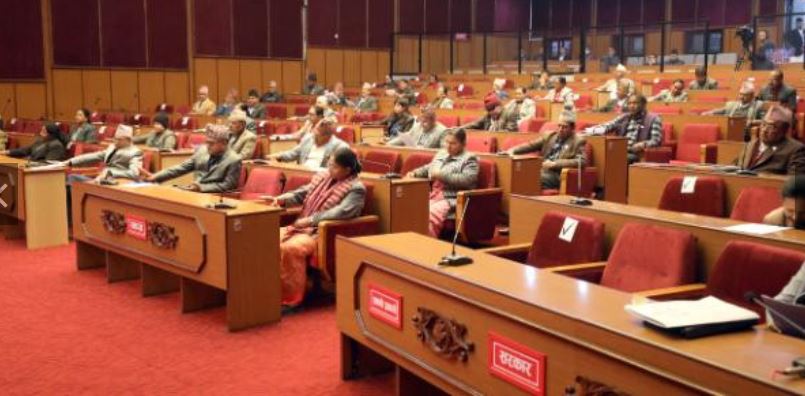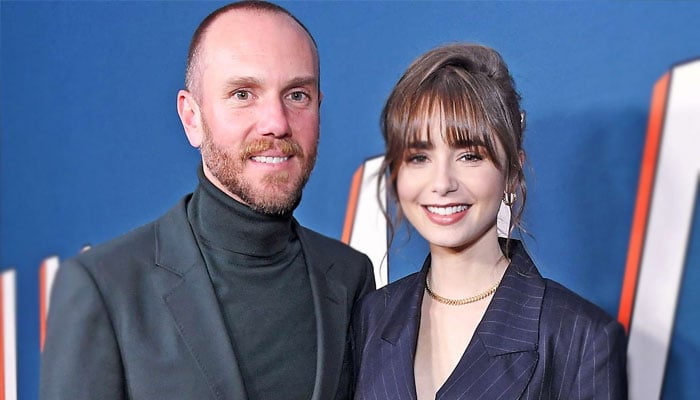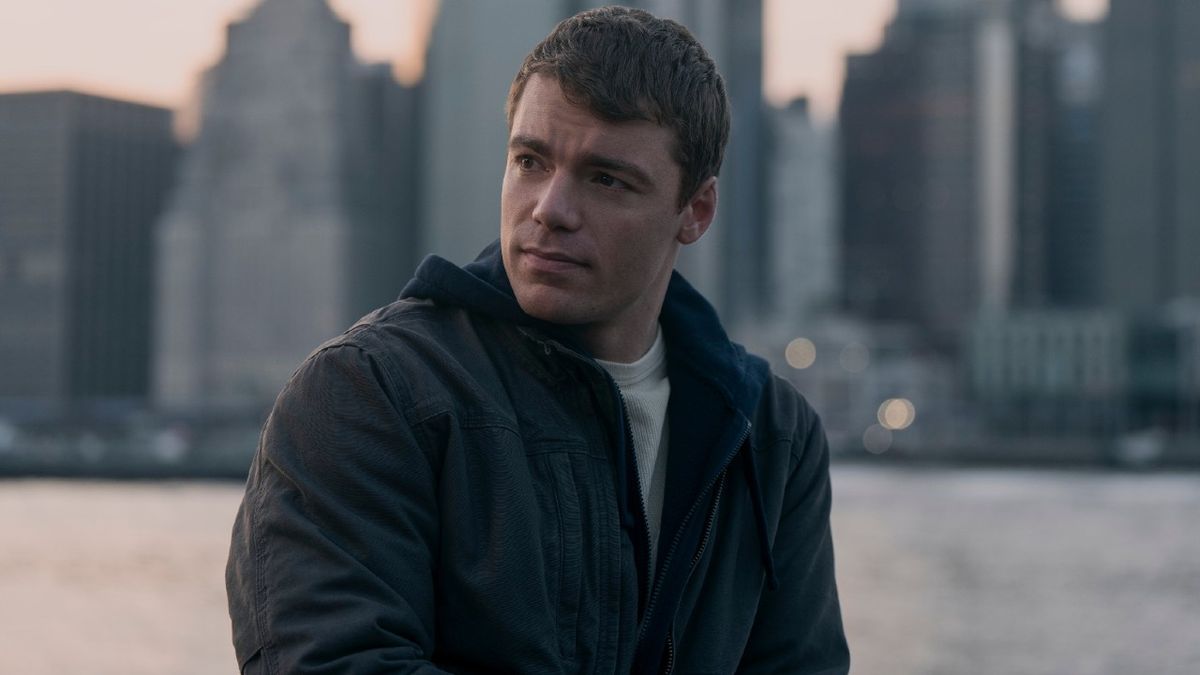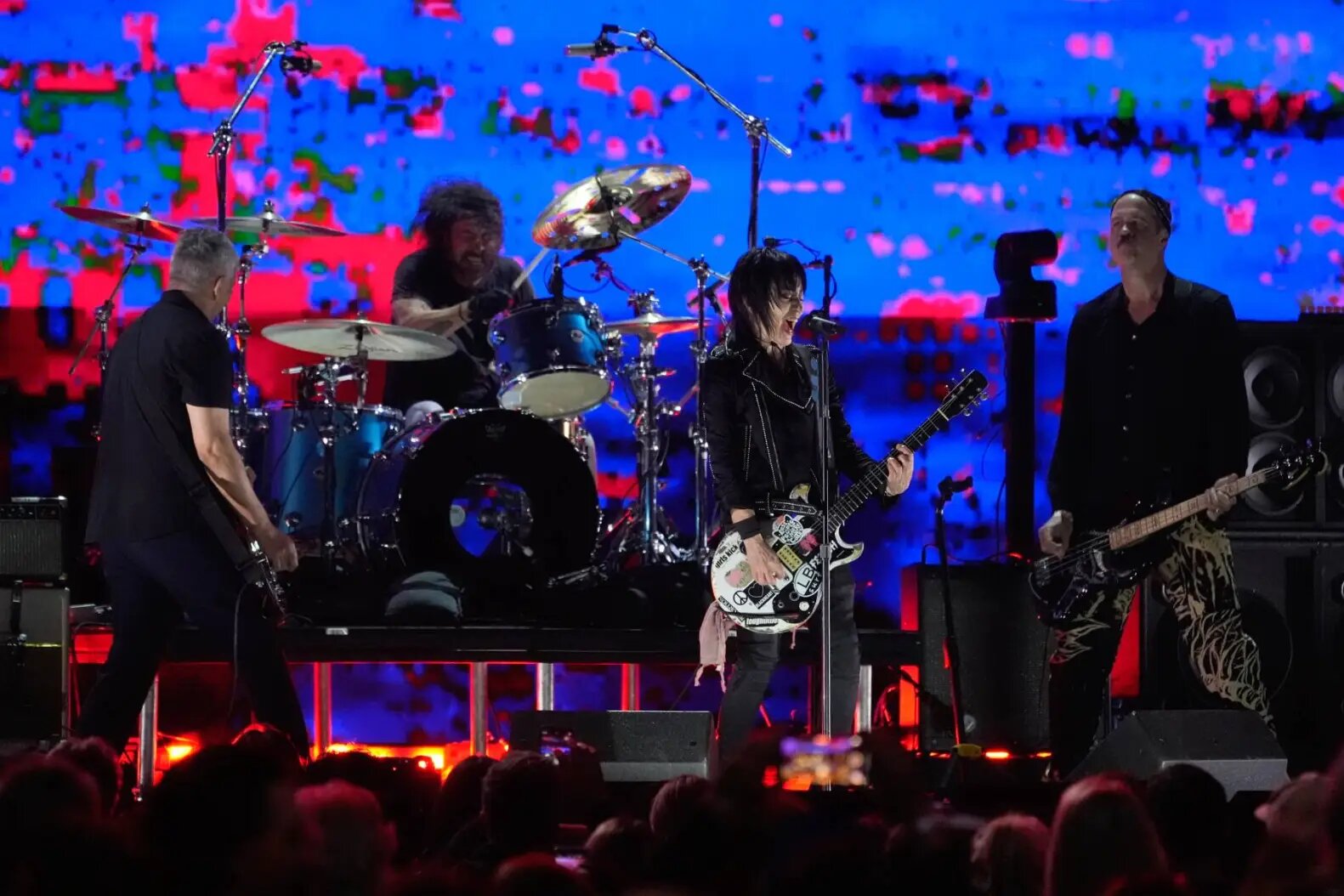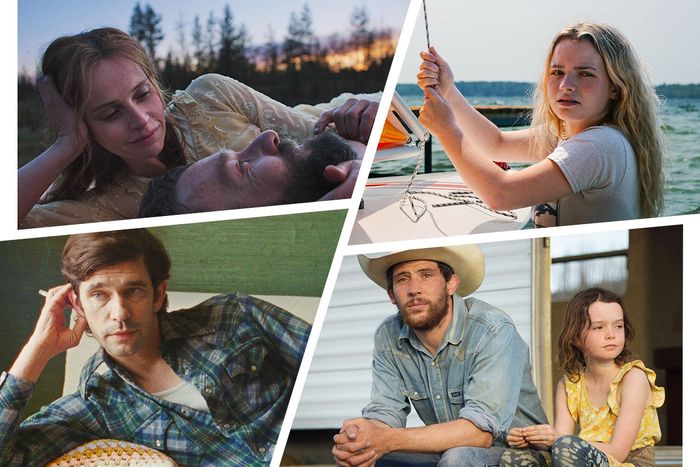
Last week, actors, directors, writers, documentarians, distributors, and yes, some Vulture employees descended on Park City for the 41st Sundance Film Festival . Rumored to be the festival’s last year in Park City — there are designs to move to Salt Lake City, Cincinnati, or Boulder — there was a bittersweet, muted enthusiasm to this year’s premieres and screenings. Whispers echoed through Main Street: Maybe it was an off year, maybe the festival lost its juice.
Still, a few gems emerged in the slush. Bilge: I’ve never been a big “This was a bad Sundance year” guy, but I think I finally have to say it: This was a bad Sundance year. Of course, that opinion largely rests on the fact that a lot of the higher-profile titles — which are the movies most of us wind up having to write about, because they have stars, or come from established filmmakers, or whatever — whiffed badly.

Whether it was the failures of genre titles like Opus , The Thing With Feathers , or Rabbit Trap , or the almost incomprehensible stupidity of something like Bubble & Squeak , or the middling indie homecomings of Kiss of the Spider Woman and Last Days , every day there seemed to be some huge movie (well, “huge”) that we all lined up for and were massively disappointed by. I don’t think this is the fault of the festival programmers or organizers, by the way. There might be a number of reasons for this.
For years now, the middle ground for these types of pictures — not micro-budget, but also not studio blockbusters — has been steadily vanishing. And because of the increasing focus on awards, a lot of highly touted films opt for Venice or Toronto or Telluride premieres. Which I suspect leaves Sundance with a smaller pool of exceptional projects.
Even though there are multiple Sundance titles among this year’s Oscar nominees, and it was not long ago that we had our first Sundance-anointed Best Picture winner, CODA . (Remember CODA ?) I do also feel like we’re still witnessing some of Hollywood’s post-strike doldrums. I was surprised by how many films felt like they needed a few more script passes.
So, maybe this year’s lackluster lineup is a one-off and there will be stronger choices next year. At the same time, it’s hard for me to deem truly “bad” any Sundance that gave us such wonderful films as Peter Hujar’s Day , Train Dreams , Sunfish (& Other Stories on Green Lake) , The Ugly Stepsister , The Things You Kill , and Rebuilding . Not to mention an always-strong lineup of exceptional documentaries, which are of course always the best part of this festival (and, sadly, also often the least covered).
Fran, I believe this was your first in-person Sundance. What were some of the highlights of the festival for you? Fran: It was, in fact, my first time in Park City, my first time at the Eccles Theater, my first time getting winded going up only one flight of stairs (thank you, altitude). The festival really felt like it kicked off for me at the Friday-afternoon premiere of Mary Bronstein’s If I Had Legs I’d Kick You starring Rose Byrne, Conan O’Brien, and A$AP Rocky — easily the best combination of unlikely performers in this year’s festival.
Byrne plays Linda, a therapist and mother caring for a sick daughter (who goes unseen but heard in the film) amid a number of other stressors big and small: There’s a hole in the apartment ceiling, her husband is away on business for two months, one of her patients is melting down, and so on. Bronstein’s first feature, Yeast , depicted a stressful camping weekend in which a group of young female friends trade unwarranted barbs at each other for 80 minutes straight. Legs is no less stressful; modestly speaking, it’s probably 20 times more stressful.
The film played like a real-deal thriller, the people around me screaming and groaning and laughing and shielding their eyes. The movie doesn’t totally come together for me, but it’s undeniably a ride. Did any of the movies you saw garner a similar vocal response from the audience — for better or worse? Bilge: The thing about Sundance is that very often the screenings we attend are also the big, glitzy premieres where the whole cast and crew are present.
The response at Kiss of the Spider Woman , for example, was quite loud. Partly because it’s a musical (which is a genre that always invites mid-movie applause), partly because it’s a premiere, partly because J.Lo was there.
And I’m sure a lot of those people in the audience did genuinely like the movie — even if I didn’t, with the sole exception of Tonatiuh’s star-making performance, which absolutely deserved the huge ovation at the end. What I’m more excited by are those screenings that are packed and yet totally quiet , where it feels like you can hear the minutest shuffle. That’s when you know a film is really working its magic.
That was my experience at Rebuilding , in which Josh O’Connor plays a cowboy who’s just lost the family farm in a massive wildfire, and who’s struggling to put his life back together. Years ago, “saving the family farm” was like one of several go-to clichés we used to describe an imaginary (and presumably bad) boilerplate Sundance movie. And yet, Rebuilding was filled with such humanity, such warm detail, and Josh O’Connor made such a wonderfully scruffy sad single dad, that the movie transcended any clichés.
Then there was Train Dreams , which I didn’t see at its premiere but at a press-and-industry screening. Those tend to not have much applause or anybody hooting and hollering. They do tend to have a lot of walkouts, because not everybody is necessarily there to see the whole movie (buyers, managers, etc.
). But my screening of Train Dreams was pretty much totally rapt. Nobody left.
And by the time the credits rolled, I was worried the lights would go up too quickly, because I was still crying like a baby. There haven’t been a lot of sales at this festival, so it’s nice to see one of the better films get a distribution deal — Netflix has bought Train Dreams . But I’m a little worried a Netflix deal will mean this beautiful, big-screen movie gets either a cursory or nonexistent theatrical release.
Let’s hope that Netflix does the right thing here and puts it in a meaningful number of theaters before the film disappears into the great streaming beyond. Fran: I stayed for most of the Train Dreams credits in an attempt to pull myself together. The obvious comparison here is Terrence Malick, but I was also reminded of the early work of David Lowery.
I hope people get to see it in theaters; it deserves a screen as big as its trees. The best films I saw this year were from somewhat veteran filmmakers: the aforementioned Bronstein, Train Dreams , Cherien Dabis’s All That’s Left of You , James Sweeney’s Twinless , and Ira Sachs’s Peter Hujar’s Day . Part of what was so refreshing about these films was not necessarily an excess of skill or budget so much as it was the clear-eyed vision of someone not trying to throw every possible thing at the wall.
Take All That’s Left of You , a handsomely directed and otherwise straightforward family drama about three generations of a Palestinian family. Dabis keeps her cards close to her chest for most of the film, only to reveal her sprawling narrative’s central wallop in the last act. I couldn’t shake the film for a day or two after I saw it, a testament to Dabis’s sense of control and patience in her writing.
Unlike you, I saw zero documentaries in Park City, though I am hoping to remedy that this week on Sundance’s online platform. You saw far more of them than I did — what stood out in the doc section to you? Bilge: The documentary sections at Sundance are always the strongest, and this year was no exception — from the opening-night premiere of Questlove’s Sly Lives! to smaller, under-the-radar titles like Dating Game and Zodiac Killer Project . Even some of the celebrity-driven docs, which tend to be really hit or miss, were quite strong, such as Marlee Matlin: Not Alone Anymore and Pee-Wee As Himself.
What’s a bit surprising though was how little discussion I saw of the documentaries. Yes, the bigger, more star-studded premieres often eat up a lot of space, but Sundance documentaries are usually good for a few controversies and breakouts. This year, not only did I not see a lot of coverage, I also didn’t hear much discussion about the docs on the ground from other critics and reporters.
Some of this might be due to the fact that we get online access to all the competition titles the last few days of the fest — which makes it an ideal time to catch up with docs. So maybe that has resulted in some unforgiving triage: While we’re in Park City, we now focus entirely on those Premiere titles that won’t be available online a few days later. And thus, the docs get screwed when it comes to the buzz factor.
There’s a broader crisis in the world of non-fiction distribution right now — something I’ll be writing more about in the coming weeks — so a place like Sundance serves as an important venue for these titles to get some degree of exposure. I thought for sure there’d be a lot more talk about The Stringer , a film that posits (with plenty of compelling evidence) that the infamous “Napalm Girl” photo from the Vietnam War was taken by someone other than the photographer who was credited for it (and who went on to win a Pulitzer for it). Now, I think The Stringer is a pretty uneven film, but still, there’s a fascinating story at its heart.
Similarly, Predators , about the complicated legacy of NBC’s To Catch a Predator series, felt like it was ripe for some Discourse — but as far as I can tell, little such Discourse materialized. I can say that I loved Coexistence, My Ass! about the Israeli comedian and activist Noam Shuster Eliassi, whose support for a free Palestine, and whose growing impatience with centrist, can’t-we-all-get-along bromides have made her a pariah in her own country. Again, a movie I expected to make more of an impact at the festival.
The same could be said for GEN_ , Gianluca Matarrese’s riveting look at a Milan doctor who specializes in fertility treatments and in helping trans patients figure out what kind of treatment they want to undergo; the film is not stylized, but its unflinching and compassionate focus on the doctor and his patients feels like a radical act of formalism. Admittedly, these are lower-profile films, but you’d think that given the times we’re living in, such pictures would have made waves. So too Mr.
Nobody Against Putin , a harrowing, first-person account of a school in a small Russian town’s transformation from a place of learning to a staging ground for nationalist and military propaganda as the Ukraine War heats up. The teacher at the heart of the film (and the “Mr. Nobody” of the title) is co-director Pavel Talankin, who shot this footage by himself over the course of years, at great risk to life and limb, and who has since fled Russia.
Where was the coverage of this man’s bravery? Of course, I myself could have written more about these films. Instead I was too busy waiting in line for Bubble & Squeak or whatever. The question now is if any distributors will be bold enough to pick up these titles and actually get them in front of audiences.
Fran: One of the bigger stories out of this year’s Sundance has been distributors’ hesitation — whether due to lingering effects of the fires or buyers’ skepticism or some combination — to buy up the stronger films at the festival. At the time of our writing, only a small handful of films have sold. One of the movies whose fate lies in jeopardy is our mutual favorite of the festival, Ira Sachs’s Peter Hujar’s Day .
Sachs’s last film — the sexy, funny, and sharp Passages — wound up being a critical favorite, putting Franz Rogowski on the map. In Peter Hujar’s Day , Sachs tones down the volume and the crop tops for something more intimate. The film is adapted from Linda Rosenkrantz’s book of the same name: a transcript of a conversation she had with the photographer Peter Hujar about how he spends his day.
What unfolds on screen over 75 blissful minutes is both mundane and transcendent. Hujar, played by Passages ’ Ben Whishaw, and Rosenkrantz, played by Rebecca Hall, kvetch and gossip and discuss everything from food to art to mutual friends to New York City. Shot on 16-mm.
by Alex Ashe, Peter Hujar’s Day might be Sundance’s best-looking film, its interiors warm and inviting. I don’t want to think too hard about what NYC rents were like in the ’70s. But Whishaw and Hall are at the center of the action, gentle and curious about one another.
Sachs clearly has great affection for them as these two artists once did for each other. It’s like eavesdropping on the two most interesting people at the coffee shop down the block. Because we were stretched as thin as the oxygen in Park City, there are a few titles that we let slip by.
I’m curious to see Eva Victor’s much-lauded debut Sorry, Baby as well as a handful of the docs you mentioned above. Is there anything you didn’t catch you’ll be keeping an eye out for later this year? Bilge: Despite seeing movies pretty much round the clock, I have an uncanny ability to miss the big sale at every Sundance. Last year I missed It’s What’s Inside .
(Still haven’t seen it, in fact.) In 2021, I missed CODA . In 2020, I missed Palm Springs .
And so on. And this year I missed Together , the Alison Brie–Dave Franco thriller(?) that Neon picked up. A bad day of snowbound bus snafus kept me from being able to see the documentary It’s Never Over, Jeff Buckley .
And I also missed the aforementioned If I Had Legs I’d Kick You , which for the first several days of the fest was the only title anybody seemed to agree was any good. (Well, that and The Ugly Stepsister , the delightful alt-Cinderella body-horror thriller that came into the fest with a Shudder deal already in hand.) There definitely was a strangely downbeat atmosphere at this year’s festival.
A critic friend joked that the flags flying at half-staff all over town (still down for the late Jimmy Carter) were for the movies we were seeing. That seemed to encapsulate everybody’s mood. Maybe it was the fact that we know Sundance will be leaving Park City, though we don’t know for where yet.
(I’ve enjoyed my trips to Utah, so I’m kind of hoping they’ll stick around the same general area and go with Salt Lake City.) I had expected maybe a kind of “Last Hurrah” vibe, but it felt more ..
. postapocalyptic. Like the last days of a going-out-of-business sale.
Less buzz, less anticipation, less hope, fewer people. (Also, technically speaking, fewer movies.) Hell, maybe it was the election.
Let’s not forget that Sundance tends to occur very close to, and sometimes literally on, Inauguration Day. That can account for not just the mood but also the trepidation to talk much about, let alone buy, movies about hot-button issues. If a distributor buys GEN_ , will their company get shut down? Will Mr.
Nobody get shipped back to Russia if we profile him? If somebody releases Zodiac Killer Project , will Ted Cruz do a citizen’s arrest? I’m joking, but I’m also sort of not joking. The craziest shit seems possible at the moment. Fran: Beyond the overall downcast mood, I also got the sense that people were tired of dealing with the festival’s infrastructure.
Slow shuttles, bad traffic, screenings too scrunched together — it’s one thing to see a bad movie, but it’s even more irritating to miss a good one on account of the elements, as I and many others did. Maybe a change of scenery would brighten the mood and give everyone a fresh(-ish) start going forward. Bilge: I will say this, however.
Every year at Sundance, I try to carve out some time on my very last day to see a movie I know very little about, just because it’s playing at the right time and is the right length. Last year, that movie was Ghostlight , which blew me away and wound up making my list of the top ten movies of 2024 . This year, that movie was Mohammad Reza Eyni and Sara Khaki’s documentary Cutting Through Rocks , a striking account of a 37-year-old, headstrong, motorbike-riding tomboy and former midwife named Sara Shahverdi who lives in a small Iranian village and has just won local elected office, the only woman to do so.
The film follows her as she attempts to succeed at her new position, while also providing a safe haven for the girls in her area, many of whom tend to get married off in their early teens. Perhaps needless to say, the men of the village (including her own relatives) aren’t entirely down with the cause. It sounds like a staid, good-for-you movie — ennobling, progressive, with its heart in the right place, etc.
— but it’s also raucously entertaining (Shahverdi is a spectacular subject) and, at times, heart-stoppingly sad. I was completely riveted. And the experience reminded me all over again of the sense of discovery that makes film festivals special — and is the reason why Sundance still matters.
.



